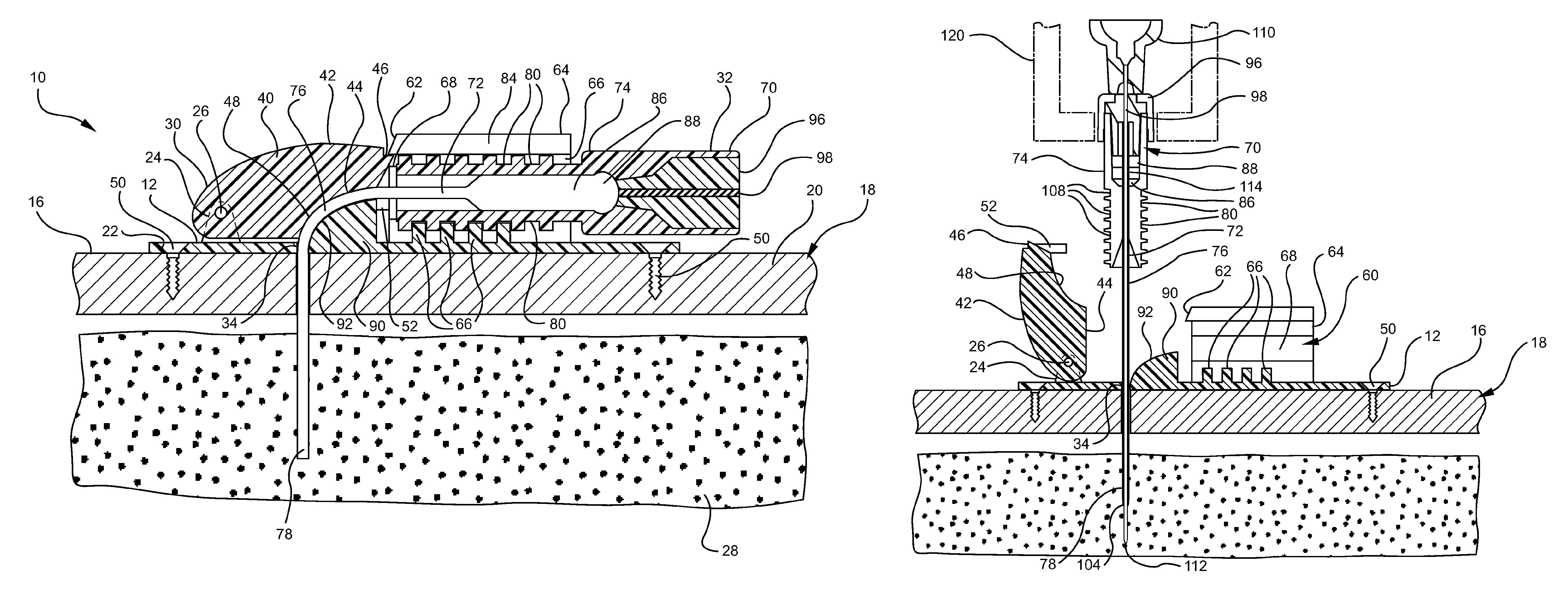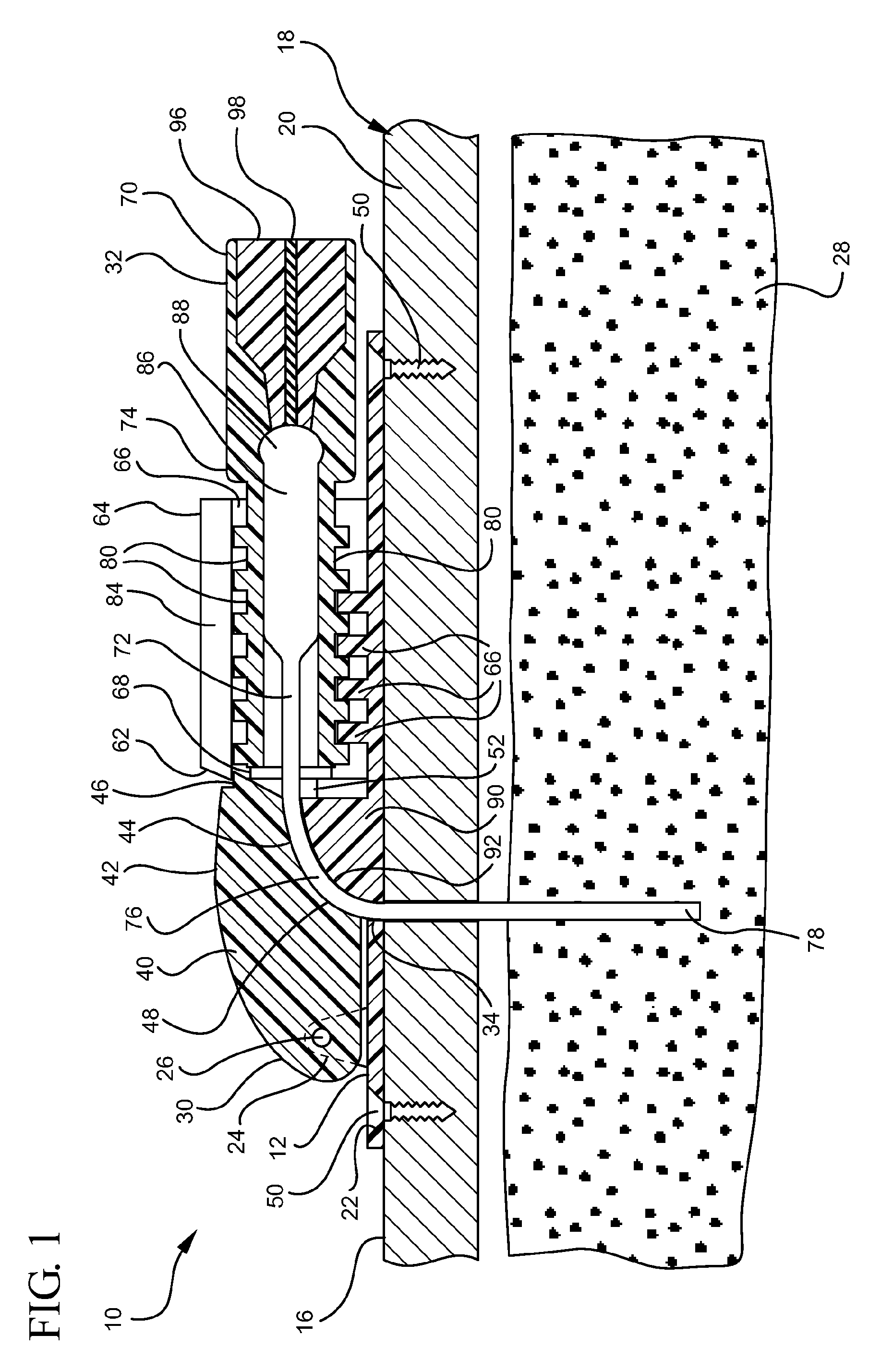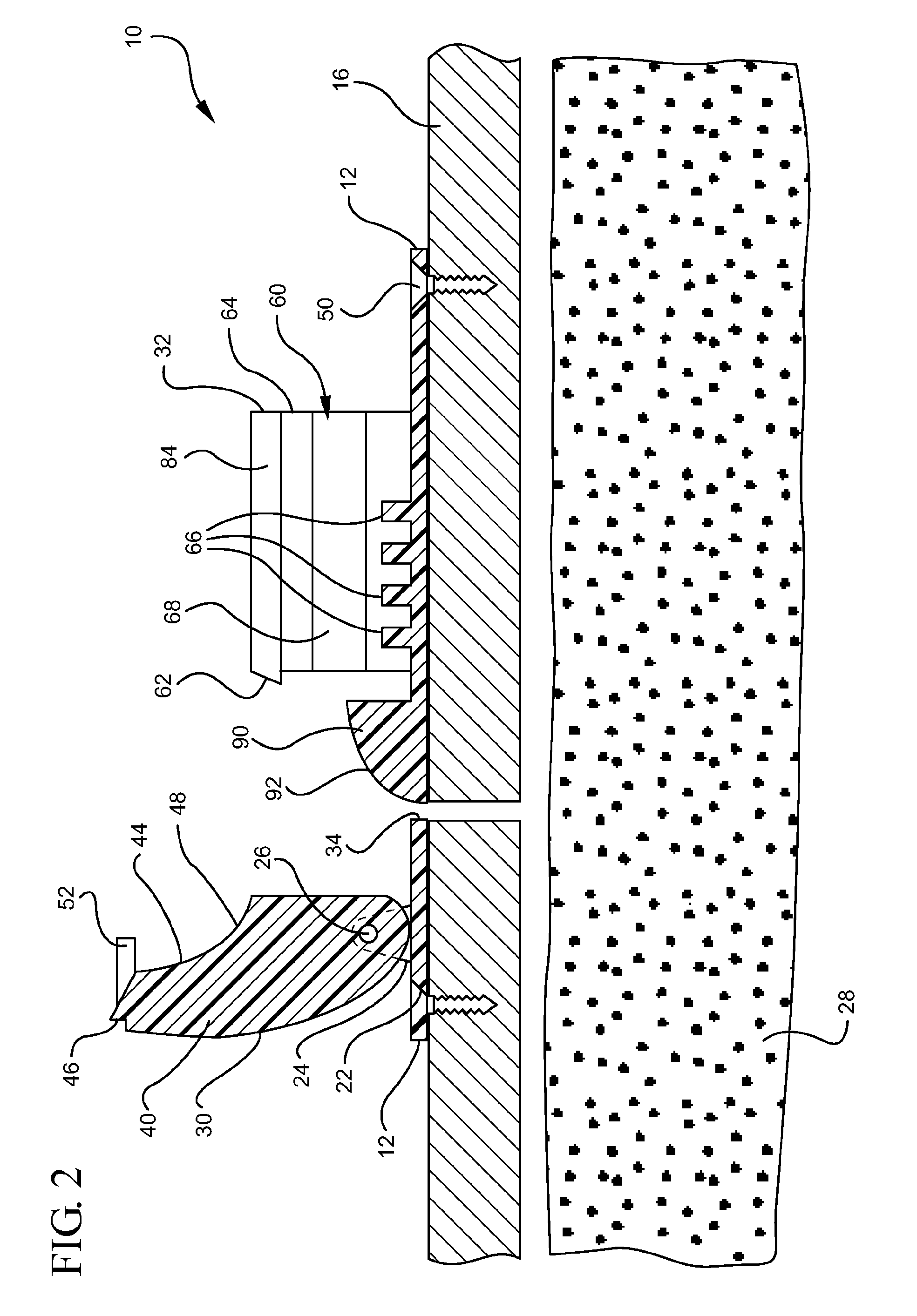Systems and methods for providing a convection-enhanced delivery device
a delivery device and convection technology, applied in the field of convection-enhanced delivery systems, can solve the problems of ineffective systemic or intrathecal delivery of drugs, inability to accurately position the catheter within the target tissue, incomplete, etc., and achieve the effects of reducing the vertical profile of the delivery device, and reducing the distance between the adapter portion
- Summary
- Abstract
- Description
- Claims
- Application Information
AI Technical Summary
Benefits of technology
Problems solved by technology
Method used
Image
Examples
Embodiment Construction
[0019]The presently preferred embodiments of the present invention will be best understood by reference to the drawings, wherein like reference numbers indicate identical or functionally similar elements. It will be readily understood that the components of the present invention, as generally described and illustrated in the figures herein, could be arranged and designed in a wide variety of different configurations. Thus, the following more detailed description, as represented in the figures, is not intended to limit the scope of the invention as claimed, but is merely representative of presently preferred embodiments of the invention.
[0020]Referring now to FIG. 1, a convection-enhanced delivery system 10 is shown. The delivery system 10 comprises a base 12 that includes a generally planar mounting surface 14 that interfaces directly with an outer surface 16 of a patient 18. In some embodiments, the mounting surface 14 of the base 12 is arched or otherwise shaped to conform to a no...
PUM
 Login to View More
Login to View More Abstract
Description
Claims
Application Information
 Login to View More
Login to View More - R&D
- Intellectual Property
- Life Sciences
- Materials
- Tech Scout
- Unparalleled Data Quality
- Higher Quality Content
- 60% Fewer Hallucinations
Browse by: Latest US Patents, China's latest patents, Technical Efficacy Thesaurus, Application Domain, Technology Topic, Popular Technical Reports.
© 2025 PatSnap. All rights reserved.Legal|Privacy policy|Modern Slavery Act Transparency Statement|Sitemap|About US| Contact US: help@patsnap.com



